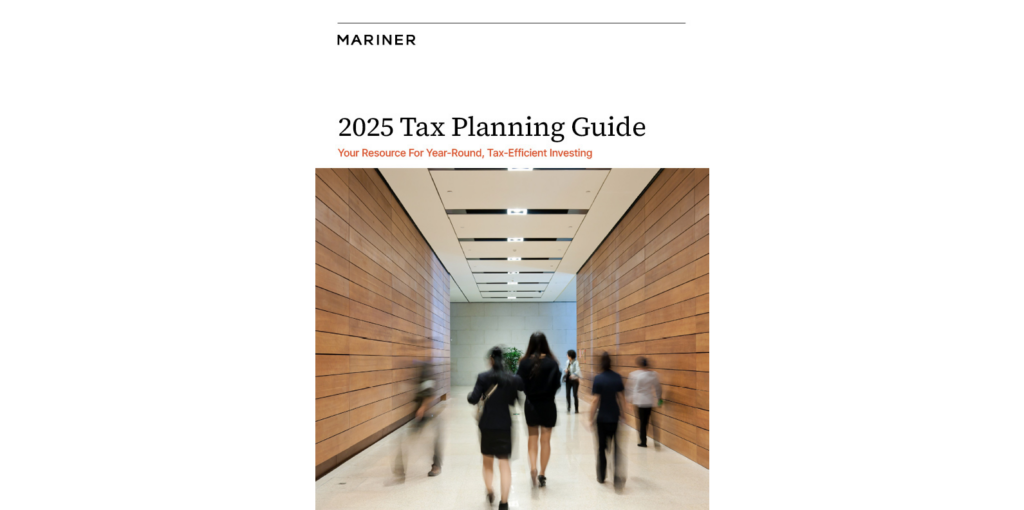Establishing a Retirement Plan

Establishing a Retirement Plan Benefits Committee
The Employee Retirement Income Security Act (“ERISA”) is clear about the results that plan fiduciaries must achieve. Pursuant to ERISA Section 404, a plan fiduciary must:
- Manage the plan for the exclusive purpose of providing benefits to plan participants and beneficiaries.
- Manage the plan “with the care, skill, prudence and diligence under the circumstances then prevailing that a prudent man acting in a like capacity and familiar with such matters would use in the conduct of an enterprise of like character and like aim.” In short, fiduciaries are held accountable as a “prudent expert.”
- Diversify the plan’s investments so as to minimize the risk of large losses, unless it is clearly prudent not to do so.
- Always manage the plan in accordance with all plan documents as long as they are not inconsistent with ERISA.
ERISA is not as clear, however, about the manner in which to meet these goals. ERISA requires a “process and compliance” driven management style rather than a traditional “value and results” format. Standards and best practices adopted for plan management should be enumerated in written form to create a clear process through which all fiduciaries may develop a plan of excellence. Frequently, the written document takes the form of a Benefits Committee Charter. The benefits committee (“Committee”) is a standing committee appointed by the board of directors of the sponsoring company. The charter outlines the responsibilities of the Committee with respect to the 401(k) retirement plan sponsored by the company.
Committees are established to simultaneously achieve three basic objectives:
- Provide employees with a broad array of suitable investment options
- Fulfill fiduciary responsibility
- Manage risk and minimize the personal liability associated with managing a plan
Committees, intending to reduce their fiduciary responsibility, frequently partner with an outside investment fiduciary service provider. While this type of relationship isn’t appropriate in every case, working with an outside provider can relieve the plan sponsor of many investment-related responsibilities. The shifting of fiduciary responsibility is the main benefit of working with an investment fiduciary service provider. Investment fiduciary service providers generally operate in one of two roles:
- ERISA 3(21) “Co-Fiduciary” – The co-fiduciary provides investment recommendations and the ultimate investment decisions are shared with the benefits committee.
- ERISA 3(38) “Investment Manager” – The investment manager is solely responsible for the selection, monitoring, and termination/replacement of the plan’s investment options.
The named fiduciary (often the Committee) is ultimately responsible for selecting the investment fiduciary service provider and reviewing their performance, fees, process and ability. The Committee can never delegate fiduciary responsibility for appointing an investment fiduciary to carry out these duties. This responsibility is what obligates the plan sponsor to document its due diligence process in the selection of the investment fiduciary and the continued oversight and review of the investment fiduciary.
Formal Establishment
The Committee should be formally established in writing with its purpose and scope set out in the charter (see attached sample). The charter should outline the appointment and replacement process of Committee members. Committee members should consist of the number of individuals deemed necessary by the plan sponsor. Committee members will often acknowledge their acceptance of the appointment to the plan sponsor in writing.
Selection of Committee Members
The Committee shall be the investment fiduciary responsible for prudently managing the investment portfolio and will assume the following responsibilities:
- Have the exclusive authority to establish, execute and interpret an investment policy statement for the portfolio.
- Be solely responsible for the selection and retention of professional advisors to the portfolio, which may include, but not be limited to, investment managers, investment consultants, custodians, attorneys, accountants and clerical staff.
- Be solely responsible for the periodic monitoring of plan investments and advisors to the plan.
Committee members normally are senior members of Human Resources, Finance and Operations, and are normally headed by Chief Financial Officers or others who have an understanding of capital markets. It is recommended to keep Committees small and to have an odd number of voting members, such as three to five members. The Committee could have an office of Chairman and a Secretary. The Chairman could be responsible for conducting meetings of the Committee and have voting rights the same as any other Committee member. The Chairman should perform such other duties as the Committee may assign and be the designated Agent for service of legal process. The Secretary is typically responsible for keeping minutes of the transactions of the Committee and the official custodian of records of the Committee. The Secretary, together with the Chairman, shall execute all official contracts of the Committee. The Committee could also maintain agendas, authorize certain members to execute instruments necessary for the Committee to manage the plan.
All Committee members should be educated on the fundamentals of ERISA. This could include an understanding of a fiduciary’s duties, plan procedures and service provider’s contracts. The plan documents should also be reviewed to understand the plan’s investment strategy and the process for vendor and investment selection. Committee members should understand that ignorance, bad communications, or inexperience are not adequate legal defenses should the plan fall into question.
Committee members should be aware that they have corporate and personal fiduciary liability. Each member should thoroughly understand his or her fiduciary responsibility as well as thoroughly understand the investment review components. When new members are added, they too should be trained to understand their fiduciary responsibility and fund monitoring process. It is a mistake to assume all members understand these issues. They need to be taught.
How Does the Committee Function?
The Committee shall set its own schedule of meetings. Special meetings may be called by the Chairman or by a majority of the Committee members. It is recommended the Committee meet at least once each quarter. In recognition of the importance of the work of the Committee, regular attendance at the Committee meetings is expected from all members. A majority of the members of the Committee at the time in office shall constitute a quorum for the transaction of business.
An agenda is typically prepared for each regular and special meeting of the Committee and sets forth those items upon which the Committee anticipates taking action or discussing.
Minutes detailing records of decisions should be maintained and held by the Secretary. The Secretary shall record all acts and determinations of the Committee, and be preserved in the custody of the Secretary.
What Topics are Covered in a Committee Meeting?
Objectives and responsibilities of an investment committee may include:
- Develop an Investment Policy Statement (“IPS”) and document all decisions made.
- Establish a formal process to manage investment strategies.
- Initiate investment decisions.
- Analyze and monitor investment related expenses.
- Establish due diligence procedures for selecting and monitoring investments.
- Review the activities of “prudent experts.”
- Review the fees paid by the plan and participants
Conclusion
While a formalized Committee does not guarantee there will never be lawsuits filed against plan sponsors and their fiduciaries, it may provide an effective basis from which to build a defense. Companies that sponsor retirement plans may be able to reduce personal liability and achieve a plan of excellence by having standards and best practices, including but not limited the establishment of a Benefits Committee.
Sample Benefits Committee Charter
Charter of the Benefits Committee Of Sample 401(k) Retirement Plan:
Introduction
The benefits committee (“Committee”) is a standing committee appointed by the board of directors (“Board”) of Sample Company (“Company”).
This charter outlines the responsibilities of the Committee with respect to the 401(k) retirement plan sponsored by the Company. The retirement plan for which the Committee has responsibility is the Sample Company 401(k) Retirement Plan, and shall be referred to as the “Plan”.
Purpose of the Benefits Committee
The Committee has overall responsibility for operation and administration of the Plan and the members of the Committee are fiduciaries of the Plan.
The members will discharge their duties solely in the interest of the Plan’s participants and beneficiaries in accordance with ERISA and the specific terms of the Plan.
Committee Membership
The Committee shall consist of no fewer than five members. The smaller the plan and the narrower the scope of duties, the smaller the Committee can be. Three members should be the minimum number and it is recommended the Committee consist of an odd number of members. Most benefit committees have both administrative and investment duties. The competencies of the Committee members should reflect the responsibilities that they will undertake. Each member shall be appointed by the Board, or other appropriate entity, for a term of specified number of years as determined by the Board (e.g., three to five years). The terms of the members shall be staggered to the extent practicable. The Board shall designate one member to serve as Chair. Members must be either current employees or directors of the Company. Each member shall acknowledge his or her membership in writing. Members shall serve at the direction of the Board. If the plan has specific rules regarding the term of membership, the number of members, or the manner of appointment, review this section for consistency and revise it as necessary.
The Committee may form subcommittees as it deems appropriate. Subcommittees may be formed to address special projects for a limited period, or may become standing subcommittees for a particular purpose. Some benefit committees have an investment subcommittee and an administrative subcommittee, which allows the members to allocate their duties efficiently while retaining the ability to set policy and make major decisions as a single body. Some benefit committees convene a subcommittee for a special project, such as the evaluation of participant education services.
Meetings and Procedures
The Committee shall meet at least quarterly, and more often as circumstances require. The Committee shall keep meeting minutes and provide quarterly set frequency here to at least annual or use “periodic” reports to indicate company representatives with oversight responsibility—senior management or the Board. The Chair shall, in consultation with other Committee members, set the agenda for, and preside over, the meetings. A quorum for the transaction of business at any Committee meeting shall consist of a majority of the Committee members. Decisions shall be made by a majority of those present at the meeting.
The Committee shall have direct access to, and complete and open communications with senior management of the Company, and may obtain advice and assistance from internal advisors. The Committee may also retain independent consultants and determine the compensation for such consultants.
Authority and Responsibilities
In this section, it is important to tailor the duties to those set forth in the Plan document, Board Resolutions, and other delegations of authority. The duties can be articulated more specifically here than in the Plan documents. The suggested language is representative of a benefits committee’s duties.
Investment Duties
- Adopting and periodically reviewing and revising an Investment Policy Statement.
- Monitoring the performance of investment funds and investment managers in accordance with the Investment Policy Statement.
- Reviewing and retaining or replacing investment managers and/or investment funds for the Plan.
Administrative Duties
- Resolving all questions of interpretation or policy under the Plan.
- Ensuring the collection of all contributions owed to the Plan.
- Furnishing notices and reports to employees, participants, and beneficiaries.
- Reviewing all fees incurred by or on behalf of the Plan for reasonableness.
- Preparing and filing such forms as may be required by government entities.
- Reviewing the audited and unaudited financial statements of the Plan and audit reports of the Plan’s service providers, including SAS70 reports.
- Maintaining records of the administration of the Plan and the actions of the Committee.
- Selecting, monitoring and replacing third-party advisors to the Plan, such as consultants, actuaries, record keepers and other providers of plan services.
- Making adjustments or correcting defects under the Plan in a uniform and nondiscriminatory manner, including corrections under programs sponsored by the IRS and the Department of Labor.
- Recommending amendments that may be desirable for the efficient administration of the Plan.
Compensation and Bonding
It is important to ensure this information is consistent with language in the plan document, Board resolutions, and other delegations of authority. All members who are receiving full-time compensation from the Company shall serve without additional compensation for the performance of their duties as members of the Committee. The Company shall reimburse the members for all direct expenses properly and actually incurred on behalf of the Plan. The Committee shall be covered by a bond in accordance with Section 412 of ERISA to protect the Plan against loss.
Resources and Insurance
The Company shall provide the Committee with such information as is necessary or desirable for the Committee to fulfill its responsibilities. The Company shall purchase insurance for Committee members to cover potential liability or losses occurring by reason of the act or omission of a member or members of the Committee. The purchase of fiduciary insurance is optional, but it is strongly recommended. In addition, some companies provide members of benefits committees with indemnification for all acts except fraud or willful misconduct.
The Company shall furnish the Committee with such clerical and other assistance as the Committee may need in the performance of its duties. The Company shall be responsible for any reasonable costs or expenses incurred in the operation or administration of the Plan; however, any duly authorized plan expenses may be paid by or reimbursed from the Plan.
This document is for informational use only. Nothing in this publication is intended to constitute legal, tax, or investment advice. There is no guarantee that any claims made will come to pass. The information contained herein has been obtained from sources believed to be reliable, but Mariner Wealth Advisors does not warrant the accuracy of the information. Consult a financial, tax or legal professional for specific information related to your own situation.
Mariner is the marketing name for the financial services businesses of Mariner Wealth Advisors, LLC and its subsidiaries. Investment advisory services are provided through the brands Mariner Wealth, Mariner Independent, Mariner Institutional, Mariner Ultra, and Mariner Workplace, each of which is a business name of the registered investment advisory entities of Mariner. For additional information about each of the registered investment advisory entities of Mariner, including fees and services, please contact Mariner or refer to each entity’s Form ADV Part 2A, which is available on the Investment Adviser Public Disclosure website. Registration of an investment adviser does not imply a certain level of skill or training.

